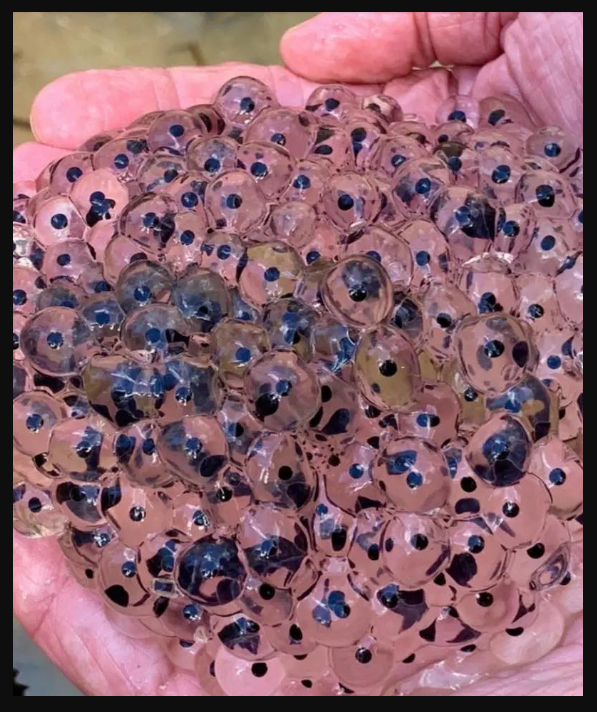A Routine Walk Turns Into a Bizarre Discovery
During a peaceful morning stroll through his soybean field, 64-year-old farmer Thomas expected nothing more than wet boots and dew-covered leaves. The early summer rain had left the soil soft and glistening, everything as it should be—until something caught his eye. Nestled in a shallow dip in the earth lay a cluster of strange, bluish eggs that seemed to glow faintly in the morning light.

An Extraordinary Find in Familiar Fields
Too large to be insect eggs and unlike anything he’d seen before, Thomas snapped a few photos and sent them to a biologist friend. By the next day, a team of researchers was standing in his field, just as curious as he was.
To everyone’s astonishment, the mysterious eggs belonged to a rare species of tree frog—one never before recorded in this region. Experts explained that rising temperatures and increased rainfall had nudged the frogs into new territory. Even more remarkable, the amphibians had adapted to lay their eggs in moist soil rather than water—a subtle but significant evolution in behavior.
Intrigued, Thomas began visiting the site each day. Before long, he noticed tiny shapes stirring inside the gelatinous orbs. Moved to help, he used collected rainwater to build a small pond nearby, offering the hatchlings a better chance at survival.
As tractors rumbled past and crops pushed skyward, the clutch of eggs remained undisturbed—a quiet sanctuary under Thomas’s watchful eye. What began as a routine walk had blossomed into something far greater: a rare glimpse into nature’s quiet persistence. And in that moment, Thomas was more than just a farmer—he was a steward of something fragile, wondrous, and entirely unexpected.
